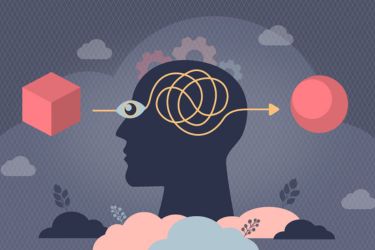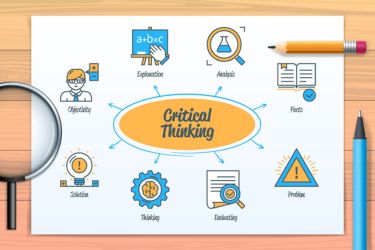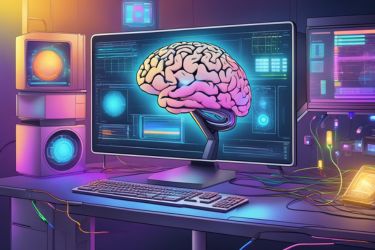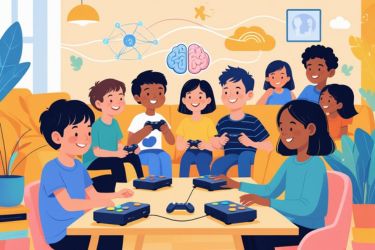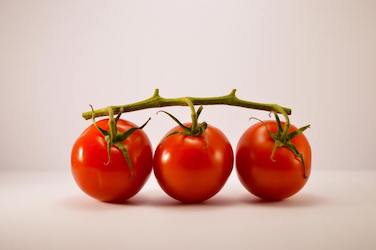Cognitive biases are mental shortcuts that affect our decision-making every day. These biases can lead us to make choices that may not align with our best interests or rational thinking. They shape our perceptions and judgments, often operating below our conscious awareness, which is why understanding them is crucial.
We encounter various cognitive biases in our daily lives, from how we make purchasing decisions to our interactions with others. By recognising these biases, we can learn to manage them better and improve our decision-making. This article will explore some common cognitive biases and their implications on our choices, enabling us to make more informed and rational decisions.
Key Takeaways
- Knowing cognitive biases helps us understand our decision-making.
- Being aware of biases can improve our personal and professional interactions.
- Employing techniques can assist in reducing the impact of these biases.
The Conceptual Foundation of Cognitive Biases
Cognitive biases are systematic errors in thinking that affect our decisions. They are often influenced by mental shortcuts, known as heuristics, which simplify complex decision-making processes. Understanding these foundations helps us recognise how our minds can lead us astray.
Defining Cognitive Bias
Cognitive bias refers to the tendencies that skew our perception and judgement. These biases arise from our brain's attempt to process information quickly, often leading us to make faulty conclusions.
Common Examples:
- Confirmation Bias: We tend to seek out information that supports our existing beliefs.
- Anchoring Effect: The first piece of information we receive can heavily influence our decisions.
Researchers like Daniel Kahneman have explored these phenomena, illustrating how biases can have a substantial impact on our daily choices. By recognising these biases, we can begin to mitigate their effects.
Role of Heuristics in Decision-Making
Heuristics are mental shortcuts that help us make decisions efficiently. While they can be helpful, they often lead us to cognitive biases.
Types of Heuristics:
- Availability Heuristic: We judge the likelihood of an event based on how easily examples come to mind.
- Representativeness Heuristic: We assess probabilities by comparing objects or events to prototypes.
These shortcuts simplify our decision-making processes but can also mislead us. Kahneman’s work in "Thinking, Fast and Slow" highlights the importance of understanding how heuristics function in our minds. Recognising their influence allows us to make better-informed choices.
Common Cognitive Biases and Their Impact
Cognitive biases can significantly shape our daily decisions in various ways. Understanding these biases helps us recognise how our thoughts may be influenced. This section will explore specific biases and their effects on our lives.
Confirmation Bias and Belief Perseverance
Confirmation bias leads us to seek out information that supports our existing beliefs. For instance, when we believe in a particular idea, we may only pay attention to news or studies that confirm it. This bias can hinder our ability to consider alternative perspectives.
Belief perseverance occurs when we hold onto beliefs even after contradictory evidence emerges. This can lead to stubbornness in discussions, impeding personal growth and understanding. Both biases can contribute to polarised views, making discussions less productive. It is vital for us to challenge our viewpoints regularly and seek diverse information to avoid these pitfalls.
Availability Heuristic and Recency Effect
The availability heuristic affects our judgement based on how easily examples come to mind. For example, if we hear about a plane crash, we might overestimate the dangers of flying. This bias can distort our perception of risk in daily activities.
The recency effect is a similar bias where we give more weight to recent events over those that occurred in the past. If we recently faced a challenging situation, we may believe it reflects a trend in our lives. Together, these biases shape how we evaluate situations, often leading to irrational conclusions. Awareness of these effects can help us make more balanced decisions.
Anchoring Bias and First Impressions
Anchoring bias happens when we rely too heavily on the first piece of information we encounter. For instance, if we learn that a car is priced at £20,000, we might see £18,000 as a bargain. This initial number anchors our perception of value.
First impressions are a critical application of anchoring bias. The way someone presents themselves can influence our judgement of their character. We may not reconsider our initial thoughts, even after getting to know them better. Recognising the power of our first impressions can improve our interactions and decision-making.
Negativity Bias and Affect on Mental Health
Negativity bias leads us to focus more on negative experiences than positive ones. We might dwell on criticism while overlooking praise. This bias can contribute to feelings of depression and anxiety.
When we consistently fixate on negative events, it can colour our outlook on life. This can create a cycle of negative thinking that affects our mental health. To counteract this bias, we can consciously practice gratitude and remind ourselves of positive experiences. This shift in focus can lead to improved mental well-being and a more balanced perspective on life.
Social and Psychological Factors Influencing Bias
Social and psychological factors play a significant role in how we process information and make decisions. These biases can shape our perceptions of ourselves and others, affecting our relationships and choices. Understanding these influences helps us navigate daily interactions more effectively.
In-Group Bias and Interpersonal Relationships
In-group bias occurs when we favour people from our social group over those from outside it. This bias can strengthen our bonds with friends and family but may also lead to prejudice against others.
For example, we often trust and collaborate more with those who share our beliefs or backgrounds. This can limit our exposure to diverse ideas, leading to poor decision-making. By recognising this bias, we can work to make fairer choices and encourage inclusivity in our relationships.
Self-Serving and Overconfidence Biases
Self-serving bias happens when we attribute our successes to our skills while blaming external factors for our failures. This can inflate our self-esteem and create an unrealistic view of our abilities.
Overconfidence bias is similar; we tend to overestimate our knowledge or control over situations. For instance, we may feel certain about a decision without considering alternative outcomes. Both biases can negatively impact our relationships, as they may lead to conflict or misunderstandings.
By acknowledging these biases, we can strive for humility and a clearer perspective on our strengths and limitations.
Halo Effect and the Power of First Impressions
The halo effect is a cognitive bias where our impression of someone influences how we feel about their traits. If we find someone likable or attractive, we may assume they possess other positive qualities, impacting our interactions.
First impressions are crucial; they can be lasting and challenging to change. For example, if we meet someone who is friendly, we might automatically view them as competent or trustworthy. This can lead to decisions based on incomplete information.
Being aware of this effect allows us to assess others more objectively, ensuring that our evaluations are based on actual behaviour rather than superficial traits.
The Consequences of Biases in Specific Contexts
Cognitive biases have significant effects on our decisions in various situations. We will explore how these biases shape our financial choices, influence political views and negotiations, and affect team dynamics in group settings.
Financial Decision-Making Biases
When making financial decisions, we often fall prey to biases like the sunk cost fallacy. This occurs when we continue investing in a failing project because we have already put in resources.
Instead of evaluating whether the investment is worthwhile, we irrationally focus on what we have already spent. This can lead to greater losses.
Other biases such as overconfidence can cause us to underestimate risks. This leads to poor investment choices, potentially harming our finances. By recognising these biases, we can strive to make more informed financial decisions.
Biases in Political Views and Negotiations
In politics, biases can strongly affect our beliefs and choices. We often seek information that confirms our existing views, which can create a form of groupthink. This limits our ability to consider different perspectives.
During negotiations, biases can distort our judgement. For instance, anchoring bias can lead us to rely too heavily on the first piece of information we hear.
This can result in unfavourable agreements or missed opportunities. Recognising these patterns helps us approach political discussions and negotiations with more balance and fairness.
Impacts on Team Dynamics and Group Decision-Making
Within teams, cognitive biases can present both challenges and opportunities. Groupthink often occurs when a desire for harmony leads to poor decision-making. Members may suppress dissenting opinions. This can prevent innovative solutions from emerging.
Biases can also lead to confirmation bias, where teams focus exclusively on information that supports their current plans.
This can stifle critical thinking and result in flawed conclusions. By fostering an environment that encourages open dialogue and diverse perspectives, we can mitigate these effects and enhance our decision-making processes.
Advancing Self-Awareness and Mindfulness
In our journey towards better decision-making, enhancing self-awareness and practising mindfulness play crucial roles. By understanding specific cognitive biases, like the Dunning-Kruger effect, and adopting strategies for ongoing learning, we can improve our judgment and choices.
Understanding The Dunning-Kruger Effect
The Dunning-Kruger effect is a cognitive bias where individuals with low ability at a task overestimate their skills. This happens because they lack the knowledge to accurately assess their performance. As a result, they may fail to recognise their limitations.
By being mindful of this effect, we can work to increase our self-awareness. We should regularly evaluate our own understanding and abilities. Seeking honest assessments from trusted peers can help us gain a clearer picture of our strengths and weaknesses.
Recognising this bias helps us avoid overconfidence and fosters a growth mindset. By accepting that we have areas to improve, we open ourselves to learning opportunities. This shift can lead to better decision-making and more effective problem-solving.
Strategies for Continuous Learning and Feedback
To advance our self-awareness, we must embrace continuous learning and actively seek feedback from those around us. Setting specific goals for self-improvement helps focus our efforts.
Regularly engaging in self-reflection is vital. We can ask ourselves questions like:
- What did I learn today?
- How can I apply this knowledge?
Additionally, creating a feedback loop with colleagues or friends builds a supportive learning environment. We should encourage open and constructive dialogue. This allows us to identify blind spots and areas needing development.
We can also leverage resources such as online courses, workshops, and reading materials. These tools can enhance our understanding and encourage critical thinking about our choices. By committing to this continuous learning process, we become more adept in managing our biases and make better decisions in our daily lives.
Overcoming Biases Through Behavioural Techniques
To make better decisions, we can use behavioural techniques. These strategies help us minimise the impact of cognitive biases in our daily lives. By understanding theories like nudge theory and emphasising diverse perspectives, we can enhance our decision-making processes.
Nudge Theory and Choice Architecture
Nudge theory, developed by Richard Thaler and Cass Sunstein, suggests that small changes in the way choices are presented can significantly influence our decisions. This approach does not restrict options but subtly guides us towards better choices.
For example, placing healthier foods at eye level in a cafeteria encourages better eating habits without making those choices mandatory. This kind of choice architecture helps to combat biases like the status quo bias, where we stick to familiar options.
By designing environments that make good choices easier, we can reduce the effects of cognitive biases and promote positive behaviours.
The Role of Diverse Perspectives and Open Communication
Diverse perspectives are crucial in overcoming our biases. When we bring together people with different backgrounds and experiences, we gain insights that challenge our thinking. This diversity can help us identify and understand our own biases better.
Open communication is equally important. Encouraging honest discussions allows us to share ideas freely, which fosters a culture of questioning assumptions. This can help unearth blind spots in our thinking, reducing issues like bias blind spot, where we fail to see our own biases.
By valuing multiple views and maintaining clear communication, we create an environment that supports better decision-making.
Evolving Understanding and Future Directions
Cognitive biases are an expanding field of study that influences how we make decisions. Recent findings and practical applications enhance our grasp of these biases, revealing their significant impact on our daily lives.
Recent Research and Evolving Theories
Recent research focuses on how cognitive biases affect our choices in unpredictable situations. Dan Ariely's book, Predictably Irrational, illustrates that our decisions often stray from rational thought due to various biases.
Nobel laureate Richard Thaler's work on "nudges" shows how small changes in context can improve decision-making. This leads us to consider how our understanding of biases evolves. Ongoing studies explore the relationship between judgment under uncertainty and heuristics, revealing how we cope with incomplete information.
As we learn more, we refine our theories, paving the way for better strategies to counteract biases in decision-making.
Practical Implications and Case Studies
The practical implications of understanding cognitive biases are vast. We can apply insights from case studies to improve areas like marketing, healthcare, and public policy. For example, a study demonstrated how altering the presentation of choices can lead to healthier eating decisions.
In another case, policy-makers used nudges to encourage residents to save energy. By understanding the biases at play, they designed initiatives that resulted in a notable decrease in energy consumption.
These examples highlight the potential of leveraging cognitive bias insights to enact meaningful change. As we investigate more, the importance of these biases in shaping our behaviours becomes increasingly evident.
Frequently Asked Questions
Cognitive biases affect how we think and make choices in various aspects of life. In this section, we address some common queries about these biases and how they influence our decisions.
What are five cognitive biases that influence our decision-making processes?
Five key cognitive biases include confirmation bias, anchoring bias, availability heuristic, overconfidence bias, and hindsight bias. Confirmation bias leads us to favour information that supports our existing beliefs. Anchoring bias makes us rely too heavily on the first piece of information we receive.
Can you provide a clear example of cognitive bias in action?
A clear example is the availability heuristic. When we think about risks, we often consider recent events. If there was a plane crash in the news, we might overestimate the danger of flying, despite it being statistically safe.
Which eight common biases or errors might impact our decision-making abilities?
Eight common biases include self-serving bias, framing effect, status quo bias, loss aversion, optimism bias, Dunning-Kruger effect, placebo effect, and bandwagon effect. Each of these biases can lead us to make less rational choices due to emotions or perceptions.
What are some cognitive biases that professionals may encounter in their work?
Professionals may encounter biases like groupthink, confirmation bias, and planning fallacy. Groupthink can lead to poor team decisions when team members conform to the dominant view, while confirmation bias may impair their evaluation of evidence.
How do cognitive biases manifest in our everyday psychological processes?
Cognitive biases often shape our everyday thinking by distorting our perceptions and judgement. For example, we may misjudge the likelihood of an event based on recent experiences or fall into thinking traps that convince us our beliefs are correct.
Could you list several cognitive biases known to affect our decision-making?
Several cognitive biases that affect our decisions include the halo effect, sunk cost fallacy, availability heuristic, bandwagon effect, and optimism bias. These biases can mislead us in various scenarios, from personal choices to professional situations.


